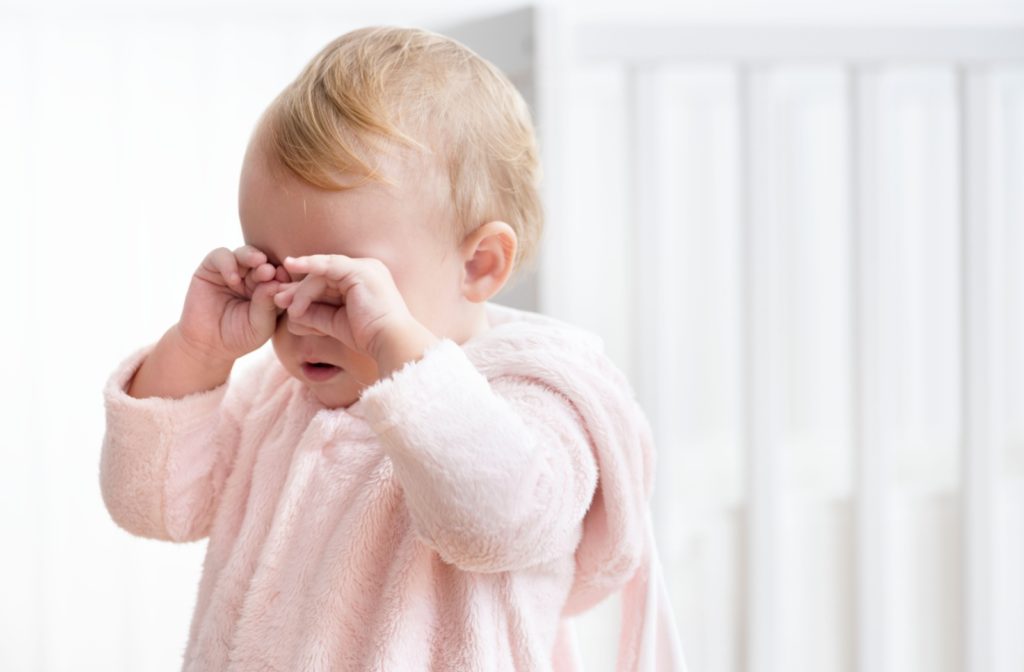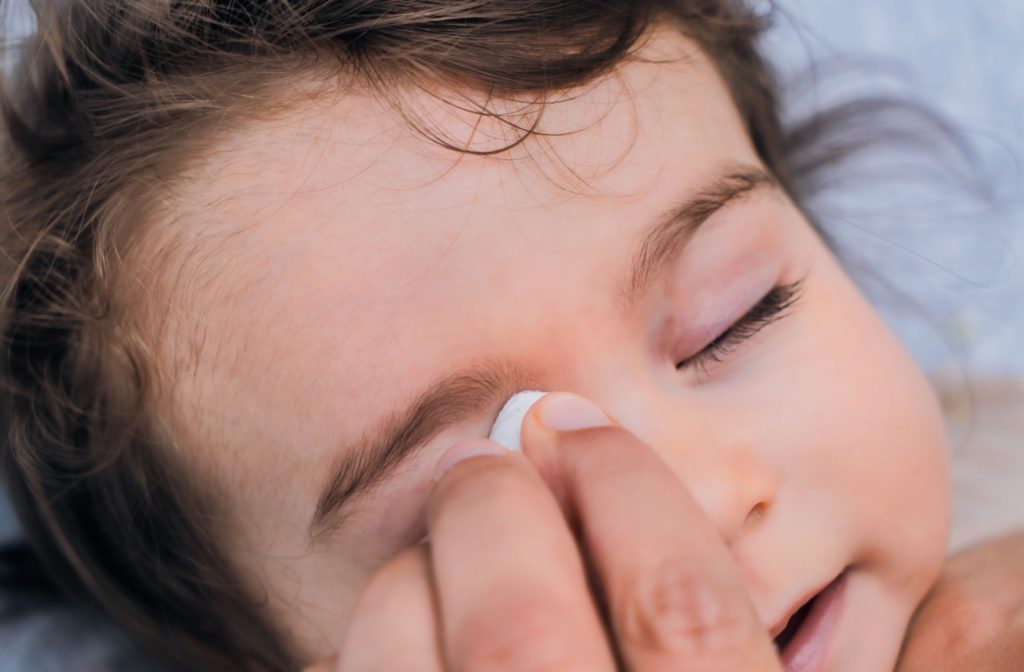When your baby’s eye appears swollen, it’s understandably concerning, especially when the cause isn’t clear. While some cases resolve with simple care, others may require medical attention. A swollen eye in a baby can result from a range of causes like allergies, blocked tear ducts, or an infection.
Understanding the potential reasons and knowing how to respond is essential in ensuring your little one’s comfort and well-being. Your optometrist can break down the causes, symptoms, and steps you can take to address a swollen eye and help your baby enjoy healthy vision.
Swollen Eye in Infants
A swollen eye or eyelid refers to visible puffiness or inflammation in or around the eye area. This swelling might affect just one eye or both and can appear suddenly or develop gradually. Additionally, swelling can range from slight puffiness but the eyes can still open normally to more obvious redness where the eyes are swollen shut.
Suffice it to say, with so many different types of swelling, so it can be hard to tell the cause on your own.
It may also feature accompanying symptoms, such as:
- Redness in or around the eye
- Watery discharge
- Eyelid tenderness or warmth
- Difficulty fully opening the eye
- Excessive rubbing or fussiness from your baby
Potential Causes of Swollen Eyes in Babies
Swollen eyes can range from a minor issue to a much more serious condition. Here are some of the most common causes:
Allergic Reactions
Babies with puffy, swollen eyes might just be battling an eye allergy. This reaction normally affects both eyes and is caused by common culprits like pollen, pet dander, or dust mites—leaving their little eyes red, watery, and itchy. While it’s usually nothing serious, allergies can still turn their world into a teary mess!
Blocked Tear Ducts
Blocked tear ducts can be fairly common in kids under 12 months. This condition occurs when the duct that drains tears doesn’t open properly, leading to pooled tears and sometimes mild swelling or discharge. Often the blockage will clear on its own in babies under 6 months. However, if it becomes infected, an eye doctor may need to interview to open the blockage.
Conjunctivitis (Bacterial or Viral)
Conjunctivitis, or pink eye, is the enemy of many teachers and parents, for good reason. Bacteria or a virus can cause this common inflammation of the conjunctiva and it can easily spread through a young population who can’t manage their hand hygiene.
It’s characterized by redness, swelling, and a sticky yellow or green discharge. Bacterial conjunctivitis, in particular, can lead to noticeable eye swelling requiring medical treatment.
Trauma or Injury
Accidental bumps or scratches around the eye are another common cause of swelling. Babies are naturally curious and may inadvertently injure themselves during play. Injuries might be minor, causing temporary puffiness, but they should be monitored closely for additional symptoms like bruising or discoloration.
Eye Rubbing
Eye rubbing can be a side effect of many of the other causes we’ve discussed. Babies may rub their eyes due to irritation, allergies, or tiredness. This repeated friction can lead to puffiness or mild inflammation around the eyes as the eye releases histamines.
Other Causes
While less common in babies, other issues like infections (e.g., cellulitis), styes, or serious systemic conditions can also lead to swollen eyes. These instances are rare, but they may require immediate medical attention.

When to Seek Medical Advice
Not all cases of swollen eyes in infants warrant immediate medical treatment, but some symptoms should never be ignored. Contact your pediatrician or an eye care specialist if you notice:
- Swelling that worsens quickly or doesn’t improve within 24–48 hours
- Signs of infection, such as fever, redness, or warmth around the area
- Discharge that is yellow, green, or excessive
- Difficulty opening the eye or significant changes in vision
- Any trauma to the eye that causes bruising, bleeding, or severe discomfort
If you’re unsure or uneasy about your baby’s symptoms, contact your eye doctor for guidance. Trust your instincts—your baby’s health and comfort are always the priority!
Home Care & Prevention Tips
Mild swelling can be managed at home with care and attention. Here are some practical tips to help alleviate symptoms and potentially prevent future issues at home:
- Cool compresses: Gently apply a clean, damp cloth cooled with water to the swollen area for brief intervals.
- Tear duct massage: If the cause is a blocked tear duct, lightly massaging the inner corner of your baby’s eye may help promote drainage. Consult your pediatrician for proper technique.
- Maintain hygiene: Clean the eye area daily with a soft washcloth to remove crusting or discharge. Use one cloth per eye to avoid cross-contamination.
Prevention is easier than a cure, so rather than waiting for your child to be in distress, take some steps to avoid the swelling before it starts, such as:
- Avoid allergens: Minimize allergens in your home by regularly cleaning surfaces, washing bedding, and using HEPA air filters.
- Trim fingernails: You can’t always stop your baby from rubbing their eye. Keep your baby’s fingernails short and clean to reduce the risk of self-inflicted scratches around the eye.
- Protect eyes during play: Encourage safe play with age-appropriate toys and limit access to harmful objects.
- Handwashing: Frequent handwashing, for both you and your baby, can reduce the risk of infections like conjunctivitis.
Prevention isn’t always foolproof, but these steps can reduce the likelihood of swollen eyes caused by avoidable factors.
Your Baby Deserves Clear, Healthy Eyes
Puffy, irritated eyes can make any baby distressed. Rest easy—Total Vision Tierrasanta is here to help. We’re passionate about pediatric eye care, offering detailed evaluations and comprehensive solutions tailored to your child’s needs.
Book an appointment with one of our trusted optometrists today and help your baby’s eyes get the care they deserve. Clearer, brighter days are just a checkup away!


